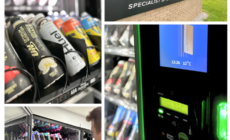-
Nutrivend selects Forterro’s Orderwise to support online expansion and streamline operations - 1 day ago
-
ARROWXL LAUNCHES AMBITIOUS ZERO WASTE ROADMAP - April 8, 2025
-
THE BCMPA’S NEW CAMPAIGN DRIVES OUTSOURCING SUCCESS IN Q1 - April 7, 2025
-
BLACKOUT TECHNOLOGIES TARGETS TELEMATICS-INTEGRATED MOBILE DEVICE BLOCKING TO COMBAT SMARTPHONE DISTRACTION - April 1, 2025
-
Sparck Technologies awarded Royal designation - March 27, 2025
-
OpenADR Alliance announces first OpenADR 3.0 certified products with EVoke Systems, E.ON Energy and Universal Devices - March 25, 2025
-
Growing fulfilment and contract packer appoints new Managing Director - March 25, 2025
-
When is it time to invest in a WMS? Understanding the key trigger points - March 25, 2025
-
eCapital helps Vantage Recruitment on its journey to financial success - March 24, 2025
-
Hugo Beck Celebrates 70 Years of Packaging Innovation with Open House Events - March 20, 2025
Here’s Why You Should Recycle These Electronics (and How)
Have you ever just tossed an old printer or an outdated smart phone into the trash? If you did, you’ve been making a waste stream mistake—and maybe you haven’t even realized it. All of those electronics are piling up in our landfills, to the tune of almost 12 million tons every year. It’s an increasing problem in the United States, and we’re only recycling a small percentage of it.
All of that recycling—even though electronics are small—adds up. Take batteries, for example. If you don’t dispose of them properly, heavy metals may leach out and end up in the water supply or the soil.
There are lots of different options for recycling those electronics. Some municipalities have drop-off sites. Sometimes you can mail things for recycling. Whatever you do, it’s important—and this graphic helps explain it in more depth.
Click to Enlarge Image

































